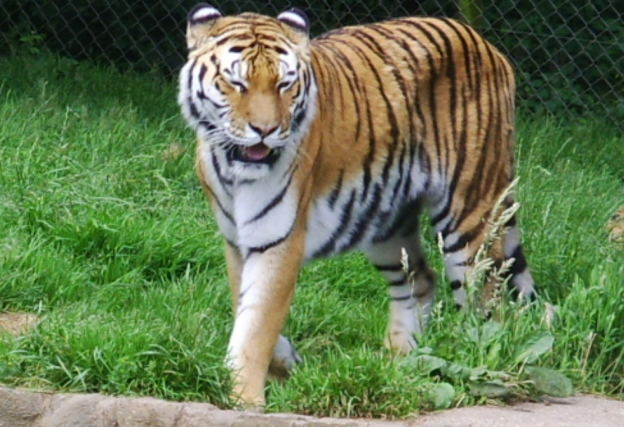Siberian Tigers
 The Siberian tiger is one of nine recent sub-species of tiger, however three of these sub-species are now extinct. The scientific name for the Siberian tiger is ‘Panthera Tigris Altaica’.
The Siberian tiger is one of nine recent sub-species of tiger, however three of these sub-species are now extinct. The scientific name for the Siberian tiger is ‘Panthera Tigris Altaica’.
Over the centuries the parts of the world the Siberian tiger can be found in has decreased dramatically. They once could be found roaming through central and western Asia and Eastern Russia; now they are confined to the far eastern parts of Siberia, with the IUCN classing this tiger sub-species as an ‘Endangered’ species.
Other common names for this tiger include: Amur Tiger, Altaic Tiger, North China Tiger and Ussuri Tiger.
The Siberian tiger is the biggest of the 8 most recent tiger sub-species and is also believed to be the biggest feline alive in the world. In exceptional cases specimens of the Siberian tiger has weighed over 320kg/710lb.
Recent studies have shown that the extinct Caspian tiger sub-species is practically identical to the Siberian tigers around now, apart from one ‘letter of genetic coding’ (which could be caused by one tiger alone) which caused the two species to split off from one another. The Caspian tiger then later became extinct in around 1954. Both species are thought to have evolved from the same ancestors.
Siberian tigers are able to breed at 4 years of age and will mate at any time of the year. The gestation period for a Siberian tiger is 3 to 3.5 months. Interestingly, at birth there is an equal amount of females to males, yet their are believed to be 4 times as many adult females than adult males. This may be due to the fact that female cubs stay with their mothers longer than males and set up new territories near their mother’s land; males on the other hand set them selves further away from their family and will sometimes fight other males for territory. Also as males travel further on their own, they could be making themselves more vulnerable to poachers and hunters.
The diet of the Siberian tiger consists mainly of Asian Black Bears and other bear species living in the area. Tigers also compete with wolves for food, yet do not seem to kill the wolves for food.
 July 22, 2010
·
July 22, 2010
·  Maddia (Admin) ·
Maddia (Admin) ·  One Comment
One Comment
 Tags: caspian tigers, siberian tigers, tigers · Posted in: Tigers
Tags: caspian tigers, siberian tigers, tigers · Posted in: Tigers



One Response
Siberian tigers are incredible animals, they are the largest species of cat in the world. Unfortunately, they are one of the most endangered species in the world. In the wild they were fewer than three thousand, and the number is rapidly decreasing. I’m afraid it will soon disappear forever.